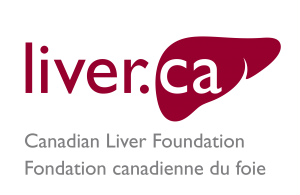Wilson Disease
Wilson Disease
Wilson disease is a hereditary disease in which excessive amounts of copper accumulate in the body, mainly in the liver. The disease affects approximately one in every 30,000 Canadians. Small amounts of copper are essential to good health. One of the liver’s jobs is to maintain the balance of copper in the body. The liver is also the main organ to store copper. In Wilson disease, when its storage capacity is full, copper is released into the bloodstream. It then accumulates in various organs such as the brain and the cornea of the eye. This copper overload damages these organs. Left untreated, Wilson disease can be fatal.
Cause
Wilson disease is inherited. In order to have the disease, a person must get two defective genes, one from each parent. The liver begins to retain copper at birth and it may take years before symptoms manifest themselves. Having only one defective gene does not lead to Wilson disease.
Symptoms
Wilson disease is sometimes difficult to diagnose. Affected individuals may have no symptoms for years. When symptoms develop, they can be subtle. Sometimes symptoms of Wilson disease resemble hepatitis. Alternatively, some individuals have an enlarged liver and spleen and liver test abnormalities. Copper accumulation in the brain can present itself in two ways: (1) as physical symptoms such as slurred speech, failing voice, drooling, tremors or difficulty in swallowing or (2) as psychiatric disorders such as depression, manic behaviour or suicidal impulses.
Very rarely, Wilson disease may cause the liver to fail. This liver failure may be the first sign of having Wilson disease. These individuals require liver transplantation.
Diagnosis
Most people with Wilson disease show signs of liver or neuropsychiatric disease while fairly young. Anyone between 3 and 45 years of age who shows signs of any of the previously mentioned symptoms should be screened for Wilson disease. Any child or teenager with an unexplained liver disease should be tested for Wilson disease. Occasionally Wilson disease is not evident until well past middle-age. The diagnosis can be confirmed with blood tests measuring serum copper and ceruloplasmin, a blood protein that contains copper. Measurements of how much copper is excreted in the urine over a 24-hour period are also useful for making the diagnosis. Another diagnostic test for this disease is finding Kayser-Fleischer rings due to an accumulation of copper in the cornea, sometimes visible as brown rings around the iris, but usually requiring special eye examination. Despite the copper accumulation, eyesight is not affected. Copper in the bloodstream may cause red blood cells to break down, causing anemia or gallstones.
The gene responsible for Wilson disease has been discovered. Conclusive genetic testing is now available to diagnose affected brothers and sisters before they show disease symptoms. Individuals who are found to have the gene defect can be treated before problems arise.
Treatment
Once diagnosed, effective treatments are available to treat Wilson disease, even in advanced stages. The toxic concentration of copper in the body must be removed. Reaccumulation of copper must be prevented. This is done with the use of a decoppering agent such as D-penicillamine or with high-dose zinc. These medications are pills, taken 2-3 times per day. Except for those individuals with liver failure, most people affected by Wilson disease do not require liver transplantation.
Is there a cure?
The treatment does not correct the fundamental flaw in liver function. Therefore, to prevent reaccumulation of copper in the body, treatment must be continued throughout the person’s entire lifetime. Individuals who tolerate the treatment and take it consistently generally enjoy good health and normal life expectancy.
Precautions
Since the gene transmitting the disease is recessively inherited, siblings of an affected individual have a 25 per cent chance of being affected. Therefore, when a new case is diagnosed, all siblings must be screened for the disease. Parents and children of affected individuals should also be screened.
What else can we learn?
The Canadian Liver Foundation is proud to have supported research that helped in the discovery of the “Wilson disease gene”. Now that the gene defect has been identified, more research is needed to identify all the ways changes in the gene can cause Wilson disease.
The Canadian Liver Foundation raises funds for research into liver diseases such as Wilson disease. Our mandate is to reduce the incidence and impact of all liver diseases. Research will provide a much better understanding of the disease and could make a cure available in the future.
Support
National Help Line:
This support resource gives you and your loved one somewhere to turn for answers after diagnosis, helps you understand your disease, and provides you with the resources you need. You can call 1 (800) 563-5483 Monday to Friday from 9 AM to 5 PM EST.
The Peer Support Network:
This is a national network of people living with liver disease that have offered to share their experiences with others. It was developed by the Canadian Liver Foundation as a means to link Canadians like you who have a family member who has liver disease, who care for someone who suffers from liver disease, or who have been diagnosed with a liver disease, to talk about your concerns with a peer in a similar situation.
If you would like to be connected with a peer supporter in your area, or would like to join the peer support network, please call the National Help Line at 1 (800) 563-5483 Monday to Friday from 9 AM to 5 PM EST or email us.
Resource Library
Help us help you!
If you are not satisfied with the information you just read or any information on our website, please take a moment to send us your comments and suggestions on the type of content you would like to find on liver.ca. Please include the page you are commenting about in the subject line of your email.


